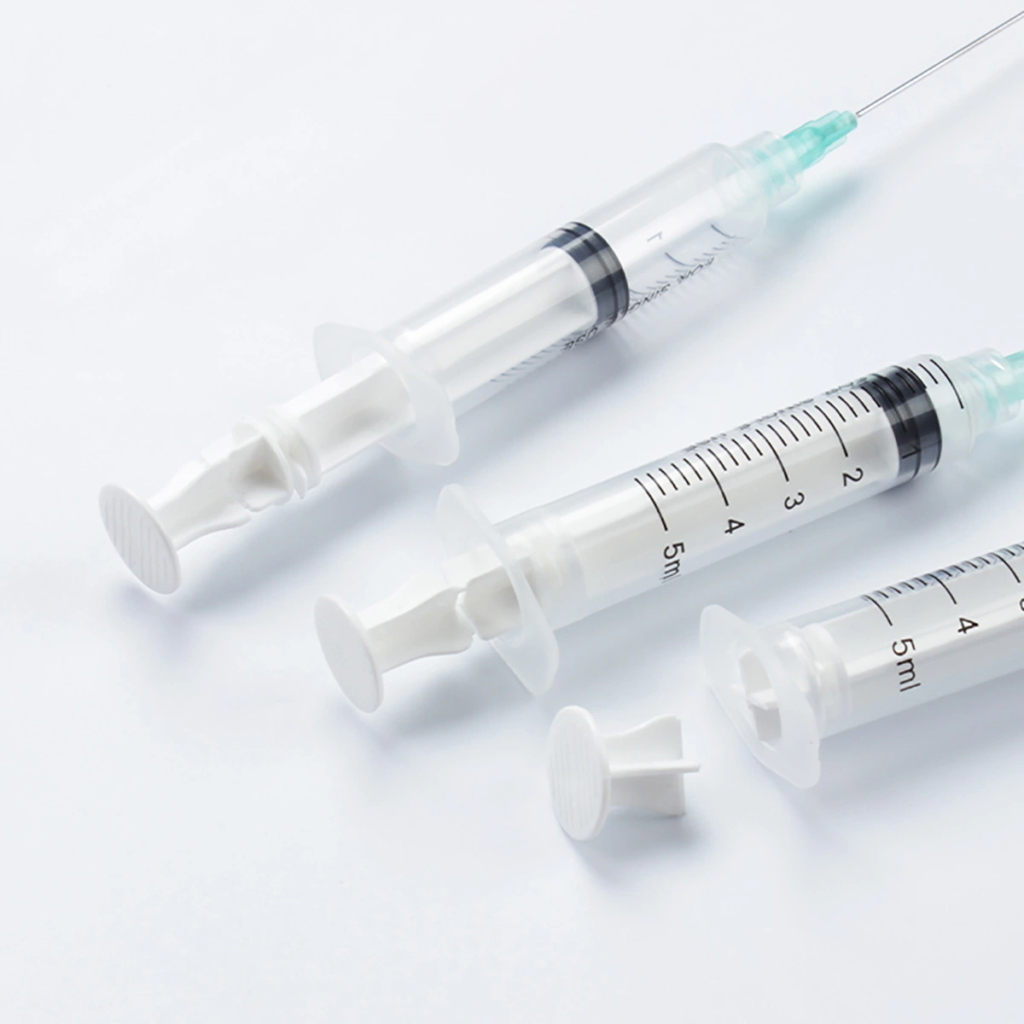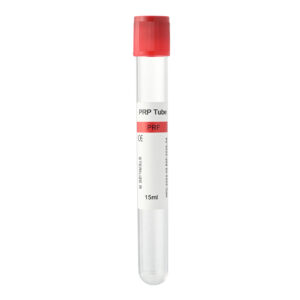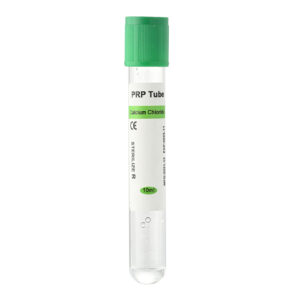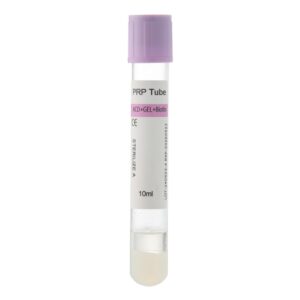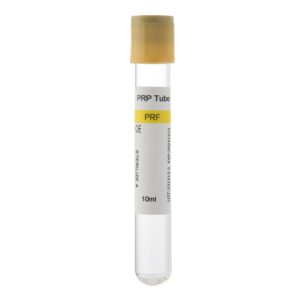Safety needles are specially designed tools for the healthcare industry to reduce the risk of needlestick injuries and ensure the safety of healthcare workers and patients. Needlestick injuries are a significant occupational hazard for healthcare professionals, potentially leading to the transmission of bloodborne infections such as hepatitis B, hepatitis C, and HIV. To mitigate these risks, safety needles have undergone continuous improvements in design, providing better protection during medical procedures. Healthcare providers primarily use safety needles for injections, blood collection, and medication preparation, featuring innovative designs that prevent accidental harm to users or others during use and disposal.
Different Types of Safety Needles
Automatic Retractable Safety Needle
The automatic retractable safety needle is a common type of safety needle. After use, the needle retracts automatically into the barrel, preventing needlestick injuries. The retractable mechanism works through spring or negative pressure, providing an automated safety solution. This type of needle is simple to operate, requiring no extra manual action to ensure safety, which reduces the risk of injury. It is particularly suitable for frequent injections and blood draws in inpatient wards and outpatient clinics. For healthcare workers, this design reduces workload and enhances safety.
Automatic retractable safety needles come in various models and specifications to meet different injection needs. For example, healthcare providers can choose different needle lengths and gauges for intramuscular, subcutaneous, and intravenous injections. This type of needle is precious for large-scale use, such as in vaccine administration or medication injections, as it reduces operational errors by eliminating manual safety steps.
Safety Needle with Protective Cover
The safety needle with a protective cover features a special protective device, typically a flip or sliding cover, that can be manually placed over the needle after use to prevent accidental injury. This type of safety needle is cost-effective and is often used in one-time injections or blood draws, though it requires the user to perform an additional safety step after use.
Safety needles with protective covers are commonly used in community clinics, emergency care, and home healthcare. The users in these environments may include healthcare workers, caregivers, or patients, making reliability and ease of use critical. Manufacturers often make the protective cover from high-strength plastic that resists puncture, effectively preventing secondary contamination and accidental needle sticks.
Dual-Protection Safety Needle
The dual-protection safety needle features two layers of safety: it not only hides the needle automatically after use but also includes a protective mechanism during insertion, reducing the risk for patients and healthcare workers. Healthcare providers commonly use this type of safety needle for venipuncture because it minimizes needle exposure and ensures the safety of both operators and patients.
Dual-protection safety needles are suitable for laboratory blood collection, inpatient care, and emergency settings where there is a high demand for blood draws. The innovative dual-protection mechanism helps reduce needle exposure during the procedure and ensures double protection after blood collection. These safety needles effectively prevent the spread of bloodborne infections, especially in environments requiring frequent blood sampling and testing.
Blunt-Tip Safety Needle
Healthcare providers typically use blunt-tip safety needles for specific medical procedures, such as medication preparation or accessing rubber stoppers during intravenous therapy. The blunt tip reduces the risk of injury to healthcare workers while still allowing the withdrawal of medication. Healthcare providers commonly use this type of needle in pharmacies and nursing stations as it minimizes the risk of needlestick injuries.
Healthcare providers widely use blunt-tip safety needles during medication preparation to draw liquid from vials, preventing a sharp needle from damaging the rubber stopper. The design also helps reduce aerosol formation, lowering the risk of healthcare workers inhaling harmful substances. In central pharmacy departments, blunt-tip safety needles are essential in minimizing the risk of injury associated with repeatedly puncturing rubber stoppers.
Pre-Filled Safety Needle
Pre-filled safety needles are designed as an integrated system with the syringe, where the needle either locks or retracts into the syringe after use. This design reduces the risk of needlestick injuries and contamination while simplifying the procedure, making it suitable for various injections such as vaccines and medications.
Healthcare providers commonly use pre-filled safety needles for large-scale vaccination, insulin administration for diabetic patients, and other chronic disease treatments requiring frequent injections. The integrated structure reduces the risk of exposure during use, effectively minimizing the chance of cross-infection. The enclosed design also significantly enhances patient safety, which is particularly useful in field medicine, emergency rescue, and other settings with limited hygiene conditions.
Butterfly Needle (Winged Infusion Set)
The butterfly needle is commonly used in intravenous infusion and blood collection. It features two wing-like tabs that allow the operator to stabilize the needle, reducing patient discomfort. Modern butterfly needles often include safety features such as needle retraction or a protective cover to prevent needlestick injuries after use. This needle type is especially suitable for use in small veins or with pediatric patients.
The winged design provides stability during use, especially for patients with difficult-to-access veins, such as newborns, the elderly, or those with chronic conditions. Butterfly needles’ flexibility and precision allow healthcare workers to control the insertion depth and angle, minimizing patient discomfort. Many butterfly needles now include an integrated tube, reducing the risk of needle displacement during blood collection or infusion, thereby improving the safety and effectiveness of the procedure.
Arterial Blood Collection Safety Needle
Healthcare providers use arterial blood collection safety needles for collecting arterial blood, typically for blood gas analysis. Blood gas analysis is crucial for assessing lung function and pH levels, particularly in ICU and emergency patients. These safety needles include various protective mechanisms, such as needle protection and automatic sealing, ensuring safety after blood collection.
Arterial blood collection is riskier than venous blood collection, which makes safety features essential. Arterial safety needles’ unique needle protection design quickly seals the needle tip after use, preventing accidental needlesticks. Healthcare providers mainly use this type of needle in intensive care units, respiratory departments, and other areas requiring frequent blood gas analysis.
Needle-Free Connector (Safety Needle Alternative)
The needle-free connector is a device that replaces traditional needles in medication delivery and intravenous infusion systems. Healthcare providers use it to connect different catheters or medication vials during intravenous therapy, significantly reducing the risk of needlestick injuries by eliminating the need for a traditional needle.
The needle-free connector uses a specially designed valve to ensure the safe flow of fluids while avoiding exposure to the air, thereby reducing the risk of infection. Its use enhances the safety of patient care, especially in critical care and surgical settings, where healthcare providers can safely and efficiently administer multiple medications through the connector.
How Safety Needles Work
The working principle of safety needles relies on mechanical design or special features to reduce needle exposure after use, minimizing the risk of needlestick injuries. Different safety needles achieve this goal in various ways, such as automatic retraction, protective covers, and dual-protection mechanisms. By swiftly hiding or covering the needle after use, safety needles effectively prevent secondary contact and potential needlestick incidents.
Automatic retractable safety needles utilize a spring or negative pressure system to retract the needle into the barrel immediately after injection. Safety needles with protective covers use a manual plastic cap to cover the needle after use, preventing accidental injury. Needle-free connectors eliminate the need for a needle, using a specialized valve to ensure safe medication delivery.
Benefits of Safety Needles
- Reduced Risk of Needlestick Injuries: Safety needles significantly lower the risk of accidental needlesticks during injections, blood collection, or medication preparation, reducing the likelihood of bloodborne infections.
- Decreased Cross-Contamination: Safety needles are designed to immediately hide or cover the needle after use, reducing exposure time and lowering the risk of cross-contamination, ensuring the safety of healthcare workers and patients.
- Increased Efficiency: Designs like automatic retraction and pre-filled safety needles simplify procedures, allowing healthcare workers to quickly complete injections or blood draws while maintaining safety, thus improving efficiency.
- Versatility for Various Medical Scenarios: Safety needles come in different types that suit various medical needs, from frequent intravenous injections in hospitals to home care for chronic patients.
- Reduced Psychological Stress: The risk of needlestick injuries affects physical health and imposes psychological stress on healthcare workers. Using safety needles helps alleviate this stress, enabling them to focus more effectively on patient care.
Conclusion
Different types of safety needles are designed to ensure the safety of healthcare workers and patients. Choosing the right safety needle can significantly improve work efficiency and reduce the risk of needlestick injuries. In practice, medical institutions and healthcare workers must select the most suitable type of safety needle based on specific medical needs and usage scenarios to achieve the best protection.
The use of safe needles is a commitment to both healthcare worker protection and patient care. Each safety needle’s unique design reduces occupational hazards and enhances medical safety. We hope this article helps you better understand the features and applications of various safety needles, providing a valuable reference for choosing the most appropriate tools in medical practice.

